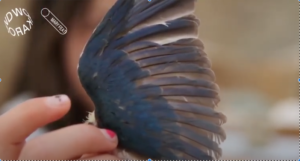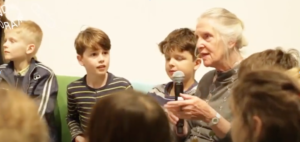Children are curious from birth and have a powerful drive to make meaning of their world. They have the right to a school education that responds to their interests and capabilities.
Princes Hill Primary School’s collective inquiry learning approach was showcased in an RMIT Design Hub exhibition titled WORKAROUND WOMEN DESIGN ACTION, which ran from July 25 — August 11 2018.
RMIT Design Hub invited fourteen practitioners focused on advocacy and activism within a field of architecture to host a situation or happening or series of events, spanning a single day. This exhibition –WORKAROUND – used a broadcast format with each of the episodes live streamed. The brief for practitioners was to present a critique, conversation, interview, workshop or performance to articulate their strategies and reflect on their practice, addressing the question: What, for you, is design activism, or action in the sphere of design and architecture?
The exhibition featured the work of Mary Featherston who specialises in the design of physical environments for learning in schools and cultural institutions. The focus of her research and practice is the relationship between contemporary progressive pedagogy and design of the physical environment. Children and teachers from Princes Hill Primary School were delighted to join with Mary in exploring how design can harness children’s sense of wonder and curiosity and bring about positive change in the built environment, extending the bounds of architecture and design.
The episode led by Mary Featherston considered how people like to learn.

Working with a filmmaker, the Princes Hill children and teachers travelled to Mary’s atelier and garden. The children were invited to explore Mary’s life-long collection of natural objects — her personal ‘cabinet of curiosities’. On returning to the Design Hub, the children discussed what this experience meant to them, what sparked their sense of wonder and curiosity, what they found interesting and what they are passionate about. They explored how they pursue their own interests and how they can entice others to explore with them.

Following the RMIT Design Hub experience the inquiry continued to evolve. The year 2 children worked with principal, Esme and art teacher, Hannah to further reflect on their wonderings and to consider questions that the interaction with Mary’s artefacts had provoked.
- I want to learn more about Mary’s collection. I want to identify the bones in her collection and learn more about bones. (Tom)
- I want to look at the toadstools by the tree stumps outside her house more. I have never seen them in the wild before and I keep thinking about them. I found them beautiful. (Rosa)
- Finding the bird wing and seeing the lorikeet are often in my thoughts. I know that birds have hollow wings, but seeing the wing and drawing it makes me wonder how birds take flight. I want to research birds and flight more. (Xena)
- I am wondering why Mary loves nature so much? (Jake)
- Trees give us something beautiful to look at. Being at Mary’s helped me see this more clearly. (Sylvie)
In the next phase of the inquiry the children considered how they could entice others to explore with them. They collaborated with Year 6 student leaders who had experience building inquiries throughout their time at Princes Hill Primary School.
The Year 6s asked themselves:
- What has to be done to support the Year 2 children with this project?
- How can we help them build on this experience?
- What would make it a fun and enjoyable project?
The Year 6 leaders were struck by the curiosity and depth of questioning of the Year 2s.
- It hit me in the heart. It reminded me of how passionate I once was and the drive we used to have. (Iggy)
The outcome of the Year 6 / Year 2 partnership was a Curiosity Cabinet, curated by the year 2 children, featuring nature collections to inspire and spark curiosity in others.
From the initial provocation of visiting Mary’s home to the Design Hub, what emerged was the children’s curiosity, the stories and wonderings they attached to the artefacts, and finally the quest to curate and order their understandings and questions as a mean of sharing the experience with their peers.






